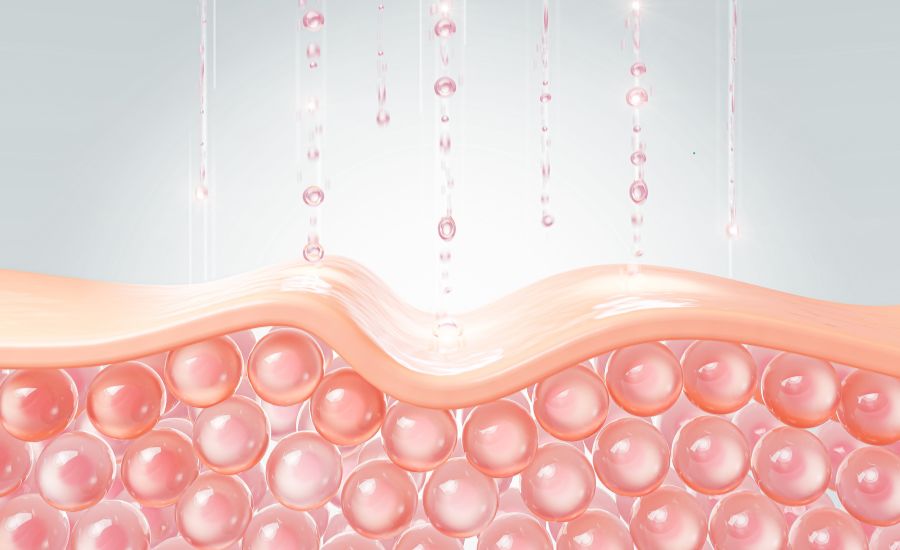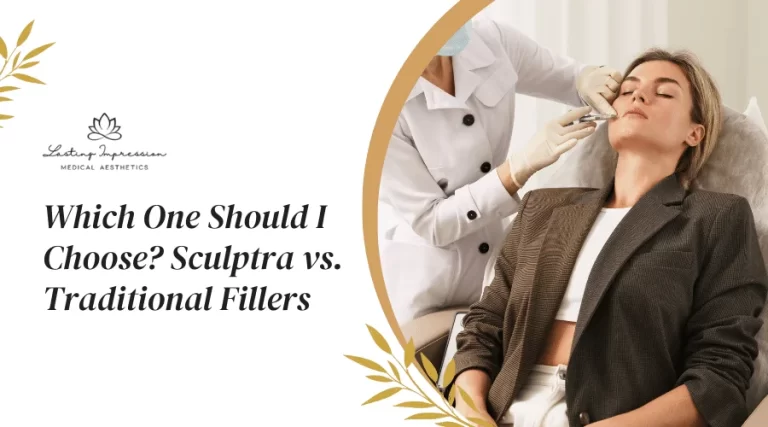Injectable treatments have become indispensable for achieving youthful and rejuvenated skin, seamlessly blending historical beauty practices with cutting-edge technologies. Join us on an exciting journey through the evolution of injectables, exploring their history, pivotal transformations, and widespread popularity. Explore Bergen County Sculptra for a personalized consultation with our team of aesthetic specialists today.
History of Injectable Facial Fillers
Exploring the history of facial fillers is like going on a journey through time. In the 1800s, people started trying paraffin injections to make their faces look better. It seemed like a good idea at first, but there were problems. People who got paraffin injections often had issues like infections or lumps, making it less than expected.
Then, in the middle of the 1900s, things changed a lot. Silicone injections became popular, catching the interest of both doctors and fans. But, safety worries hung around. Scientists and doctors worked hard to find the right mix of making faces look better while staying safe. This led to the different types of facial fillers we have today. Looking back, we can see how much injectable treatments for faces have improved and kept getting better over time.
Why are Injectables so Popular?
Injectable treatments offer a non-surgical solution to combat the signs of aging, providing quick results with minimal leisure time. The ease of use and comparatively minimal danger of injectables contribute to their popularity, making them a recommended option for face rejuvenation.
What was the first FDA-Approved Filler?
It was decided to create the US Food and Drug Administration (FDA). In 1981. approved bovine collagen as the first injectable filler. This marked a significant milestone in the field, opening the door to further research and development of safer and more effective options.
Sculptra stands out in its approach compared to other treatments:
Sculptra is a unique injectable made of poly-L-lactic acid. What makes it different is how it works on your face. Most fillers show quick results, but Sculptra does something unique. Instead of an instant change, it boosts collagen production in your skin over time. This means your face gets a more natural improvement that happens slowly.
What’s the Difference Between Sculptra and Fillers?
Traditional fillers, like Juvederm and Restylane, work right away by adding volume to specific facial areas, reducing wrinkles and lines for an immediate, youthful look. They act like plumpers, smoothing out creases for quick results.

Sculptra, on the other hand, is a biostimulator. Rather than adding volume directly, it encourages your skin to produce more collagen, resulting in gradual, natural-looking improvements that can last up to two years. This makes it an excellent choice for those looking for subtle, long-lasting results.
This difference matters for those who want a personalized cosmetic solution. If you prefer quick results, traditional fillers provide instant satisfaction. However, if you lean towards a gradual and natural refinement, Sculptra might be your choice. It allows enhanced volume to blend seamlessly with your face’s natural contours.
Does Sculptra Last Longer than Fillers?
Sculptra stands out because it lasts a long time. Unlike regular fillers that need touch-ups now and then, Sculptra’s effects stick around for up to two years. This makes it a top choice for those wanting a lasting solution for losing facial volume.
The lasting power of Sculptra is not only great for a sustained good look but also practical. You will only use my appointments to keep things up, making it more convenient. So, picking Sculptra doesn’t just give you a long-lasting boost; it also makes keeping a fresh and young appearance easier over a longer time.
Is Sculptra Safer than Fillers?
Making sure a cosmetic procedure is safe is essential. When it comes to Sculptra and regular fillers, they’re both safe if done by trained pros. But what makes Sculptra stand out is how it works.
Sculptra boosts the body’s natural collagen production, like the body’s own way of doing things. This makes Sculptra safer because it fits well with how our bodies work, lowering the chance of harmful reactions. The stuff in Sculptra, called poly-L-lactic acid, is similar to what our bodies have, so it’s well-accepted, reducing the risk of allergies. While both Sculptra and regular fillers are generally safe, Sculptra’s unique way of boosting collagen adds an extra safety layer, making it a good choice for those wanting both effectiveness and safety in their beauty journey.
Is Sculptra Permanent?
Contrary to popular belief, Sculptra is temporary. Its gradual enhancement lasts up to two years, but touch-up sessions may be necessary to maintain the desired results over time.
Is Sculptra the Best Filler Option?
The choice between Sculptra and traditional fillers ultimately depends on individual preferences, desired results, and the advice of a qualified practitioner. Sculptra’s long-lasting effects and natural-looking results make it a compelling option, especially for those seeking a subtle and gradual transformation.
The evolution of injectable treatments reflects humanity’s ingenuity in the pursuit of looking and feeling good. From historical practices to modern solutions, injectables play a vital role in enhancing our appearance. As technology advances, we anticipate more groundbreaking ideas that will redefine beauty treatments. Whether opting for swift or gradual changes, let’s embrace these innovations and continue on the journey to maintaining our beauty.





